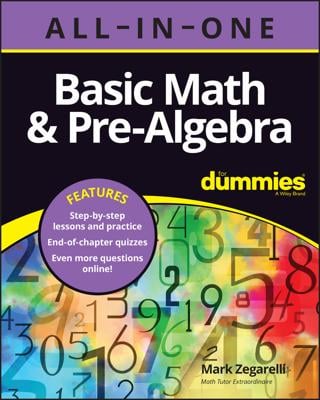Basic Math & Pre-Algebra All-in-One For Dummies (+ Chapter Quizzes Online)
Explore Book Buy On AmazonEven and odd numbers
One of the first things you probably heard about numbers is that all of them are either even or odd. For example, you can split an even number of marbles evenly into two equal piles. But when you try to divide an odd number of marbles the same way, you always have one odd, leftover marble. Here are the first few even numbers:2 4 6 8 10 12 14 16 . . .
You can easily keep the sequence of even numbers going as long as you like. Starting with the number 2, keep adding 2 to get the next number.
Similarly, here are the first few odd numbers:
1 3 5 7 9 11 13 15 . . .
The sequence of odd numbers is just as simple to generate. Starting with the number 1, keep adding 2 to get the next number.
Patterns of even or odd numbers are the simplest number patterns around, which is why kids often figure out the difference between even and odd numbers soon after learning to count.
Counting by threes, fours, fives, and so on
After you get used to the concept of counting by numbers greater than one, you can run with it. For example, here’s what counting by threes looks like:3 6 9 12 15 18 21 24 . . .
This time, the pattern is generated by starting with 3 and continuing to add 3.
Similarly, here’s how to count by fours:
4 8 12 16 20 24 28 32 . . .
And here’s how to count by fives:
5 10 15 20 25 30 35 40 . . .
Counting by a given number is a good way to begin learning the multiplication table for that number, especially for the numbers you’re kind of sketchy on.

